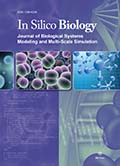Authors: Khan, Mahmud Tareq Hassan | Sylte, Ingebrigt
Article Type:
Research Article
Abstract:
Naturally occurring peptidases from organisms living under extreme conditions are adapted to function in environmental extremes, including temperature, salinity, pH, or pressure. These organisms represent unique sources for new bio-molecules that have both industrial and medicinal application. Adaptive strategies for functioning under extreme conditions are reflected at the enzyme sequence and structural level. Understanding the determinants responsible for unique functional features can be used to enhance the functional features of known proteins.
…In the present study, the amino acid sequences of 81 peptidases of the thermolysin (M4) family were analyzed for possible determinants of psychrophilic and thermophilic features, by comparing with thermolysin from Bacillus thermoproteolyticus, the prototype enzyme of the family. The analysis indicated that M4 peptidases from cold-adapted species have fewer arginines and more lysines, and also fewer tyrosines and more phenylalanines than the prototype thermolysin. However, the opposite was true for M4 peptidases from thermophilic species. For sequences from thermophilic species the ratio of the seven amino acids I,V,Y,W,R,E,L were correlated to optimal growth temperature.
Show more
Keywords: Thermolysin, M4 peptidase, MMP, HExxH motif, SMPI, sequence analysis, similarity identity matrix, multiple sequence alignment, vibriolysin, Shewanella baltica
DOI: 10.3233/ISB-2009-0392
Citation: In Silico Biology,
vol. 9, no. 3, pp. 105-124, 2009
Price: EUR 27.50




